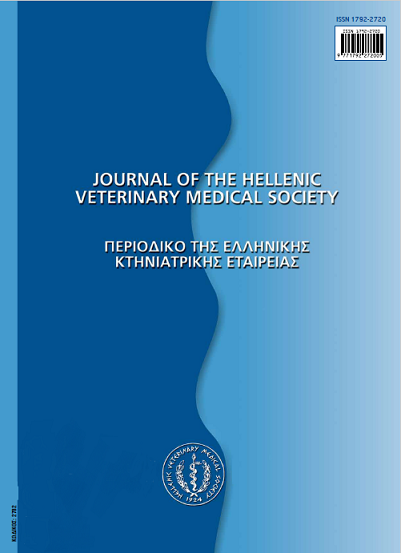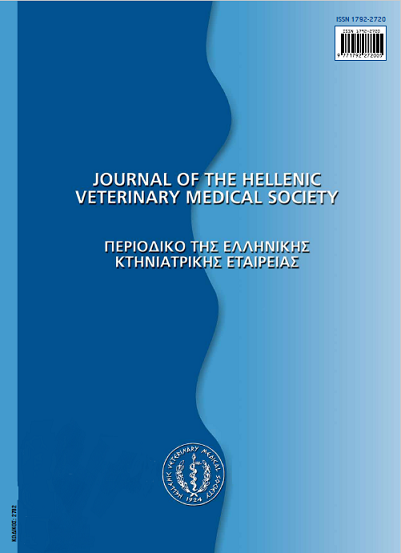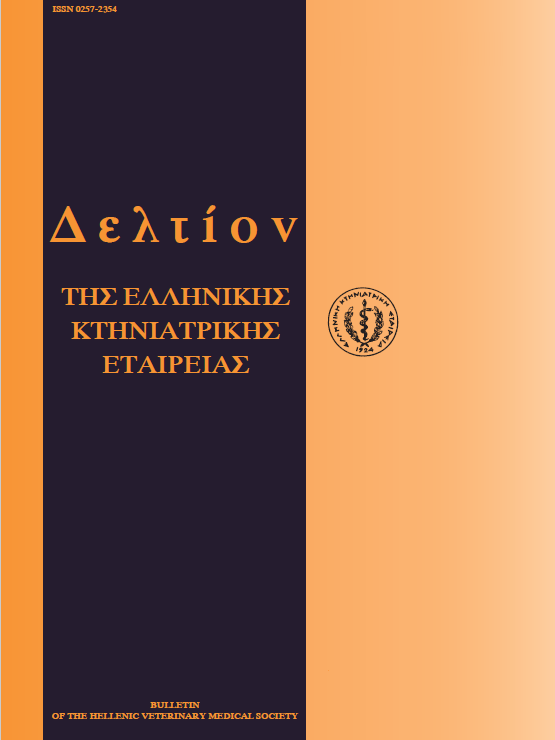Case of syngamosis in partridges of a backyard farm
Аннотация
Sick and dead 2-months-old partridges (Alectoris chukar) were presented to the unit of Avian Medicine, Faculty of Veterinary Medicine, Aristotle University of Thessaloniki, Greece. The birds were reared at a specially constructed wire cage, which covered 600 m2 of the ground, including self-growing flora, in the region of Diavata, in the countryside of Thessaloniki. The farm consisted of young partridges, adult pheasants and wild passerines. Two months after placing the birds, 5 partridges were found dead. During the clinical examination of the submitted sick partridges, severe respiratory distress was observed, while some birds had anemic combs and others were breathing with open beaks and had their necks stretched. The necropsy revealed the presence of numerous gapeworms in the lumen of the trachea, forming the typical " Y" shape, since male and female Syngamus trachea are locked in copulation. The mucosa of trachea was, also, thickened, irritated and congested. No lesions to other organs were observed and the microbiological examination of liver, spleen and air-sacs samples was negative. Meanwhile, faecal samples were collected from the farm for parasitological examination. A sedimentation method was used and eggs of S. trachea were found. Syngamosis was determined to be the cause of the partridges' death. The gapeworms are considered potentially dangerous, especially for backyard, game-birds and free-living birds, while the control of the disease is complicated. This fact, along with the selective appearance of the clinical signs and the mortality only in the partridges of the farm are the remarkable points discussed in this article.
Article Details
- Как цитировать
-
ANDREOPOULOU (Μ. ΑΝΔΡΕΟΠΟΥΛΟΥ) M., TSIOURIS (Β. ΤΣΙΟΥΡΗΣ) V., GEORGOPOULOU (Ι. ΓΕΩΡΓΟΠΟΥΛΟΥ) I., & PAPADOPOULOS (Η.ΠΑΠΑΔΟΠΟΥΛΟΣ) E. (2017). Case of syngamosis in partridges of a backyard farm. Journal of the Hellenic Veterinary Medical Society, 62(4), 327–333. https://doi.org/10.12681/jhvms.14863
- Выпуск
- Том 62 № 4 (2011)
- Раздел
- Case Report
Authors who publish with this journal agree to the following terms:
· Authors retain copyright and grant the journal right of first publication with the work simultaneously licensed under a Creative Commons Attribution Non-Commercial License that allows others to share the work with an acknowledgement of the work's authorship and initial publication in this journal.
· Authors are able to enter into separate, additional contractual arrangements for the non-exclusive distribution of the journal's published version of the work (e.g. post it to an institutional repository or publish it in a book), with an acknowledgement of its initial publication in this journal.
· Authors are permitted and encouraged to post their work online (preferably in institutional repositories or on their website) prior to and during the submission process, as it can lead to productive exchanges, as well as earlier and greater citation of published work.













